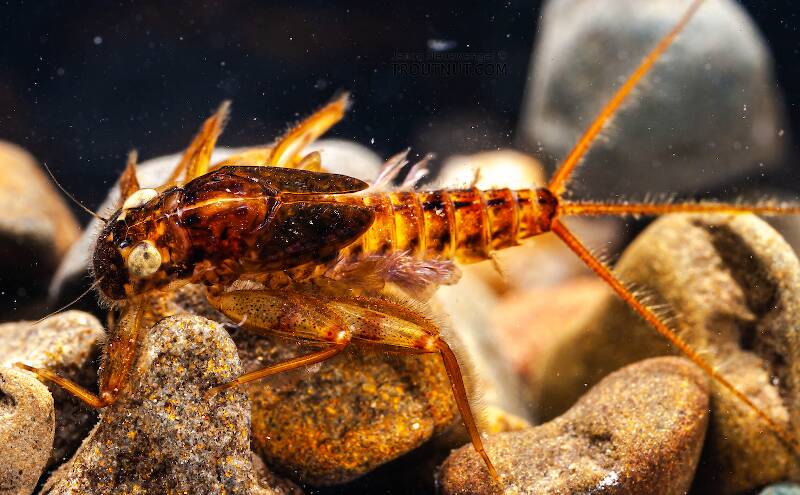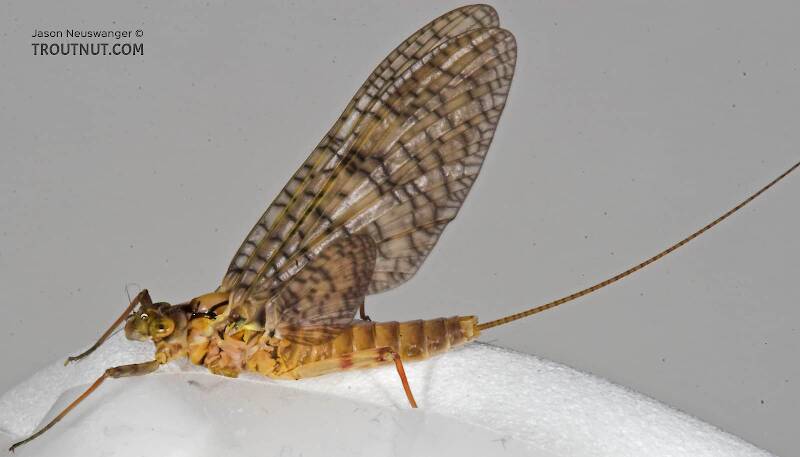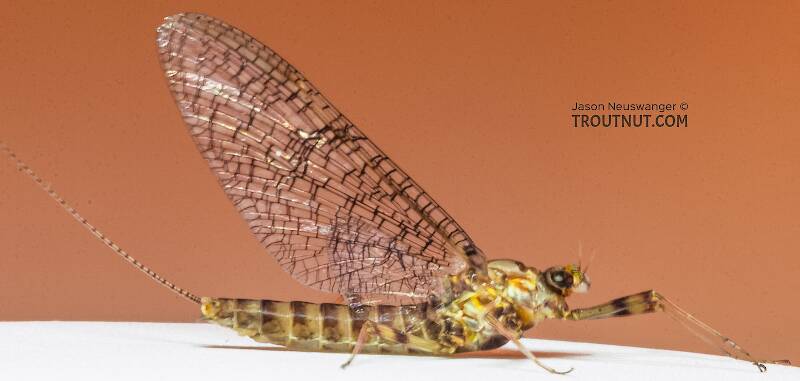
Blue-winged Olives
Baetis
Tiny Baetis mayflies are perhaps the most commonly encountered and imitated by anglers on all American trout streams due to their great abundance, widespread distribution, and trout-friendly emergence habits.
Featured on the forum

This wild-looking little thing completely puzzled me. At first I was thinking beetle or month larva, until I got a look at the pictures on the computer screen. I made a couple of incorrect guesses before entomologist Greg Courtney pointed me in the right direction with Psychodidae. He suggested a possible genus of Thornburghiella, but could not rule out some other members of the tribe Pericomini.

Troutnut is a project started in 2003 by salmonid ecologist Jason "Troutnut" Neuswanger to help anglers and
fly tyers unabashedly embrace the entomological side of the sport. Learn more about Troutnut or
support the project for an enhanced experience here.
March Browns and Cahills
This common name refers to only one genus. Click its scientific name to learn more.
Mayfly Genus Stenonema
These are pretty much always called March Browns and Cahills.
Many of America's traditional flies, like the March Brown and the Light and Dark Cahills, originated in the Catskills to imitate the mayflies of this genus. Caucci and Nastasi wrote of them in Hatches II:
By far the most important species is Stenonema vicarium, variants of which are known to anglers as the March Brown and Gray Fox. Of the others in the "Cahill" group, Stenonema ithaca is the next most important, along with Stenonema modestum and Stenonema pulchellum, which also produce localized fishable hatches. These lesser species together with a few species of Stenacron and the Stenonema femoratum represent the sporadic Light Cahill hatches on evenings in late Spring that often continue throughout the Summer.
"There is a matrimony between Stenonema flies and Catskill rivers that is as synonymous as ham and eggs."
By far the most important species is Stenonema vicarium, variants of which are known to anglers as the March Brown and Gray Fox. Of the others in the "Cahill" group, Stenonema ithaca is the next most important, along with Stenonema modestum and Stenonema pulchellum, which also produce localized fishable hatches. These lesser species together with a few species of Stenacron and the Stenonema femoratum represent the sporadic Light Cahill hatches on evenings in late Spring that often continue throughout the Summer.

This specimen seems to be of the same species as a dun I photographed which emerged from another nymph in the same sample.
See 63 more specimens...
References
- Caucci, Al and Nastasi, Bob. 2004. Hatches II. The Lyons Press.



